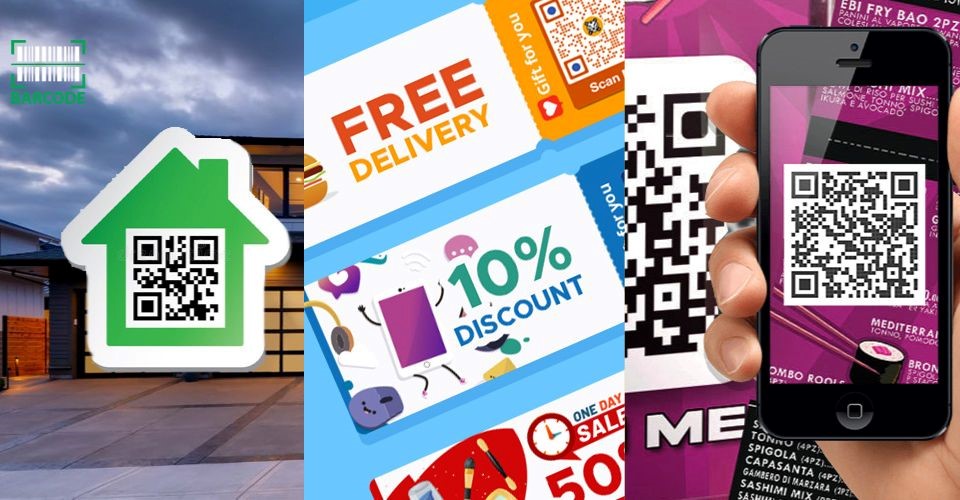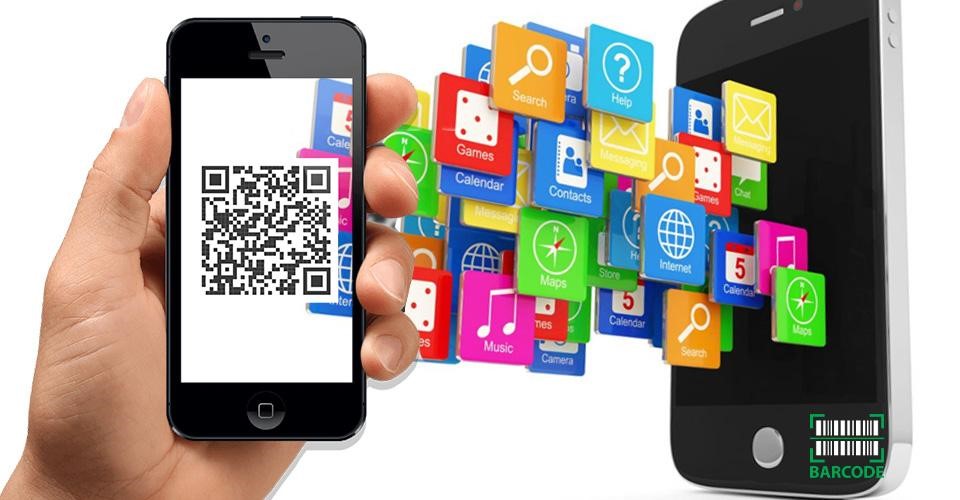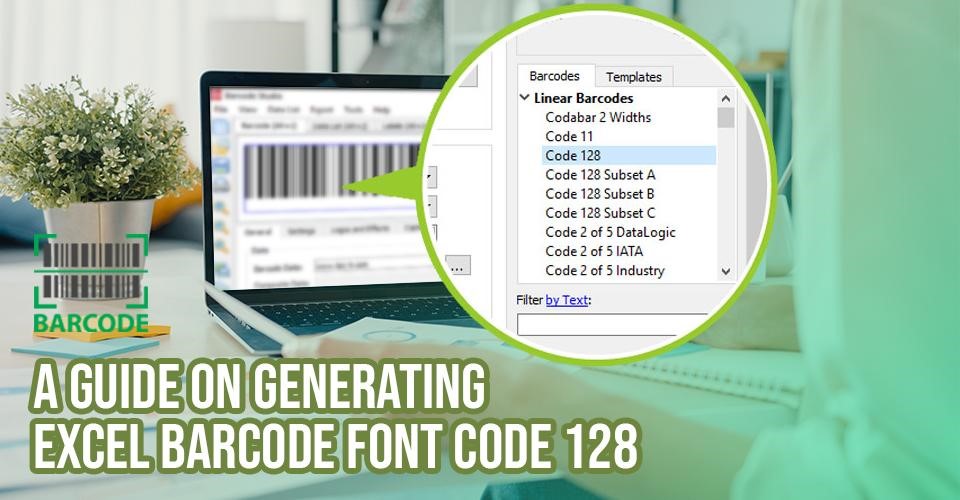Will We Run Out of QR Codes? 7 Best Applications [Updated List]
Will we run out of QR codes? This is a question that has been on the minds of many people in recent years as QR codes continue to gain popularity.
From business cards to bus stops and train stations, QR codes are versatile tools that can be used in a variety of settings.
In this article, we will explore the basics of how QR codes work, discuss the possibility of running out of them, and explore the various ways in which QR codes can be used.
So, let's dive in and explore the world of QR codes!

Will we run out of QR codes?
How Do QR Codes Work?
QR codes, short for Quick Response codes, are two-dimensional barcodes that can be scanned and decoded using a smartphone camera or a reader.
Similar to a barcode, QR codes pass along information to the reader in the form of a URL or snippet of code using a pattern of light and dark squares.
Yet, a standard code can encode more than 23,000 bits of information, or about 3,000 characters, whereas a standard UPC barcode can only store 33 bits of information in the form of a number.
Every person on earth could give a different QR code to every image, link, and item ever made without ever running out due to its intricacy.
It also means that there are virtually infinite conceivable permutations.

QR code working principle
When you scan a QR code using the camera on your smartphone, the camera captures the image of the code and converts it into digital information that can be read by your device.
The information stored in the code is then displayed on your device's screen, allowing you to access the encoded content.
When you aim your phone at a QR code, the three large squares serve as anchors to instruct the program on how to position the code and which colors are light and dark.
The necessary information is located in the remaining little squares.
Instead of using a barcode scanner app, you as a retailer should make use of a professional barcode reader device to save time. Check out our recommendations below:
Features: Excellent decording ability, 3 in 1 Bluetooth wireless connection, instant upload mode & storage mode, fast scanning speed, 2 years warranty
Eyoyo Handheld USB 2D Barcode Scanner
Features: Continuous usage all day, 1D & 2D barcode scanner, sturdy anti-shock & durable design, wide use range
Tera Pro 2023 Newest Battery Level Indicator Wireless
Features: Patented battery level indicator, superior global CMOS imaging scanning, shockproof silicone design & vibrating alert, 3-in-1 connections & widely compatible
Related post: Do QR codes expire?
Will We Run Out of QR Codes?
The global production of QR codes increased as a result of the pandemic.
WeChat's software created 140 billion QR codes in China alone, according to estimates.
Just one country's QR code payment system provided that data. What about other people throughout the world?
This gave rise to the theory that QR codes are "80% depleted" and that by 2025, no one will be able to develop new ones because all potential patterns will have been used.
So, will we ever run out of QR codes? In reality, that will never occur.
You can see the pattern of a QR code in the little squares. They are known as modules.

Running out of QR codes is impossible
A QR code design can have up to 177 rows and 177 columns, which yields 31,329 different modules. There are just two possible states for each module: black or white.
This indicates that 2^31,329 different module combinations might be used.
So, yeah, it will take a lot before there are no more distinctive QR code layouts.
Even then, a QR code maker can add additional modules or squares to produce more original combinations than the one shown above.
Want to know more? You can read How many QR codes are there.
How to Use QR Codes?
Compared to printed links or flyers, QR codes have many advantages.
First, the connection itself is under your control, so you are free to modify it whenever you like.

QR codes have many benefits
Can you change a QR code link? Yes and this is especially helpful for eateries whose menus change frequently or for businesses that put QR codes in hard-to-replace out-of-home places.
Without requiring further work from your users, you can easily update the code at the back end to point users in a different direction.
Also, you may very precisely monitor traffic, browsing, and other metrics. There is no cap on the number of codes you can make, and you can give each one a set of UTM characteristics and monitor how each one is used.
Each table at a restaurant might be marked with a different menu code, allowing you to keep tabs on which ones get the most traffic.
Some businesses even include a special code with every product they send out to aid with user setup.
What Can You Do With QR Codes?
QR code running out is impossible. Fortunately, these are some inventive uses for QR codes that both individuals and companies can make.

QR codes’ applications in real life
Business Cards
Rather than exchanging physical cards that can get lost or misplaced, people can scan a code on the card to instantly add the business owner’s contact information to their phone.
QR codes on business cards can also be used to link to a company’s website or social media pages.
This simple and sleek innovation has made business cards more dynamic and useful for businesses of all sizes.
Additionally, using QR codes on business cards can help businesses stand out from the competition and showcase their tech-savvy approach to networking.
Overall, incorporating QR codes into business cards is an innovative and effective way for businesses to make connections and share contact information in a modern and efficient manner.

QR codes with business cards
Bus Stops and Train Stations
QR codes are also widely used in bus stops and train stations to provide commuters with information about schedules, routes, and delays.
By scanning a QR code at a bus stop or train station, commuters can instantly access real-time information about the next departure time, the estimated arrival time, or any service disruptions.
They can also be used to provide detailed maps of bus routes or train lines, making it easier for commuters to navigate public transportation systems.
Moreover, QR codes on public transportation signage can be linked to promotional or educational content, such as safety tips or advertisements for local businesses.
They are a versatile and convenient tool for improving the commuter experience in bus stops and train stations, helping people to save time, plan their trips, and stay informed while on the go.

QR codes in bus stops
Customer Surveys
The advent of QR codes has made it easy for businesses to create digital customer surveys that are quick and easy to complete.
Unlike traditional surveys that require customers to fill out paper forms, surveys accessed via QR codes don’t require customers to keep track of a paper receipt or manually enter survey information.
Instead, after a customer makes a purchase, they can scan a code to access the survey online.
This simple and innovative approach to customer feedback can help businesses gather valuable insights into customer preferences, improve products and services, and enhance overall customer satisfaction.
Furthermore, QR codes can be used to provide customers with incentives to complete the survey, such as discounts or free products.
By leveraging the power of QR codes, businesses can streamline their survey process and provide customers with a convenient way to provide feedback.

QR codes in customer surveys
On Packaged Food
QR codes are increasingly being used on packaged food in supermarkets, allowing customers to access important information about the product.
By simply holding their phone up to the packaging and scanning it, customers can instantly access details about the product’s ingredients, nutritional information, and even recipe ideas.
This is an excellent way for businesses to provide customers with greater transparency about the food products they are buying, and for shoppers to learn more about what they’re putting into their bodies.
Additionally, QR codes on packaged food can be helpful for customers with dietary restrictions or allergies, as they can easily access information about potential allergens.
QR codes on packaged food are an innovative way for businesses to provide customers with important information, and for shoppers to make more informed decisions about the food they purchase.

QR codes on packaged food
Boost App Downloads
QR codes can be an effective tool for businesses to increase app downloads.
By adding QR codes to their social media profiles, business cards, and other marketing materials, businesses can provide a quick and easy way for people to access their app store links.
When people scan the code, they’ll be taken directly to the app store and can download the app without the trouble of searching for it themselves.
Besides, QR codes can be used to track scans, providing businesses with a way to count how many people are downloading their app via this medium.
Using them to boost app downloads is a smart and efficient way for businesses to drive more traffic to their app store page and increase their app’s visibility.

You can boost app downloads using QR codes
Coupons
QR codes are an effective tool for companies to track and manage their coupon marketing campaigns.
By using QR codes on coupons, businesses can easily track redemption rates and gain valuable insights into customer behavior.
QR codes on coupons work because businesses simply generate a unique code for each coupon.
Customers can then scan the code using their phones and avail themselves of the discount offered by the coupon.
This approach allows businesses to track the number of times a coupon has been redeemed and gain insight into the effectiveness of their marketing campaign.
QR codes on coupons can also be used to include additional information about the product or service being offered, as well as links to the company’s website or social media profiles.

Scan the QR code to get coupons
Contactless Menus
With the pandemic spreading across the world, many restaurants have switched to contactless menus to reduce the spread of germs.
Customers can now scan a QR code on their smartphone to view the menu, eliminating the need for physical menus that can be touched by multiple people.
This is an excellent innovation for restaurants, as menus can be updated in real-time and there is no need to print new menus every time there's a change in menu offerings.
According to industry experts, contactless menus are not just a fad but a long-lasting change that will become a permanent feature in the restaurant industry.
A readiness report shows that 33% of businesses have had a positive response to QR codes in their contactless menu system.

Contactless menu using QR code
QR codes were initially used for inventory and logistics purposes in Japan, and early technology was seen as unreliable and clunky in the US, leading to slower adoption rates.
QR codes were invented in 1994 by Denso Wave, a subsidiary of the Toyota Group, in Japan.
Since then, the QR code technology has been released to the public domain and is not owned by any particular company or individual.
Therefore, anyone can create, use, or distribute QR codes without needing to pay royalties or licensing fees.
QR codes can pose risks such as malware downloads, privacy concerns, phishing scams, and unauthorized access.
To mitigate these risks, it's important to only scan QR codes from trusted sources, keep device software up to date, and be cautious of requests for personal information or downloads that seem suspicious.
Bottom Line
QR codes have become an increasingly popular and effective tool for businesses and individuals alike, and for good reason. They offer a convenient and efficient way to access information quickly and easily, without the need for typing or manual input. With the ability to customize and update QR code links, they offer endless possibilities for marketing, advertising, and information-sharing. Will we run out of QR codes? Highly unlikely, but one thing is certain – QR codes are changing the way we interact with the world around us.
Source:
https://cntechpost.com/2020/05/27/will-QR-codes-run-out/
https://www.pymnts.com/news/payment-methods/2021/the-future-of-QR-codes-with-restaurants-continuing-to-lead/



10 Comments
Melanie Lindsey
Excellent work. Keep up the great content
Leave a Comment
Your email address will not be published. Required fields are marked *Barcodelive
Thank you
Leave a Comment
Your email address will not be published. Required fields are marked *Matteo
Sounds cool, but the question is how many "unique" QR Codes can be created?
Leave a Comment
Your email address will not be published. Required fields are marked *Barcodelive
The number is practically infinite
Leave a Comment
Your email address will not be published. Required fields are marked *Brooke Watkins
Nicely written
Leave a Comment
Your email address will not be published. Required fields are marked *Barcodelive
Thanks
Leave a Comment
Your email address will not be published. Required fields are marked *Julie
Thank you so much for publishing this important content
Leave a Comment
Your email address will not be published. Required fields are marked *Barcodelive
You are welcome
Leave a Comment
Your email address will not be published. Required fields are marked *George
Its kinda off topic, but do you know why are there three big squares in the QR code at the corner?
Leave a Comment
Your email address will not be published. Required fields are marked *Barcodelive
These tell the scanner where the corners of the code are, which way up it is (rotation), and what the grid unit size is. If all 4 corners were the same, the scanner would not know if the code was the right way up, upside down, or rotated 90 degrees clockwise or anticlockwise.
Leave a Comment
Your email address will not be published. Required fields are marked *Leave a Comment
Your email address will not be published. Required fields are marked *